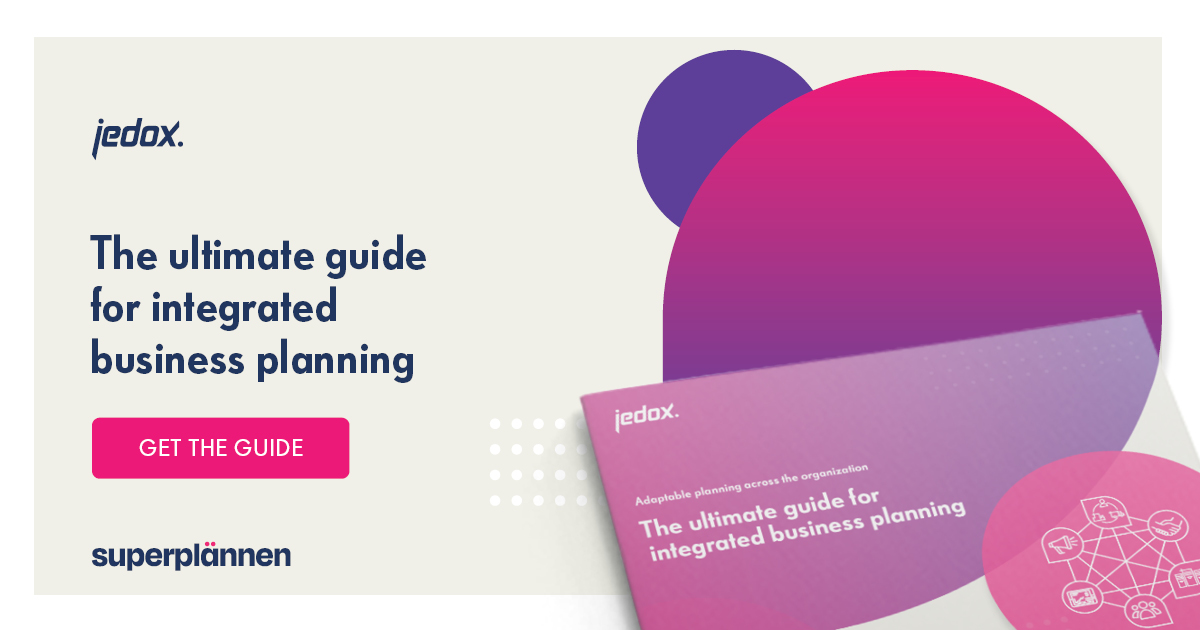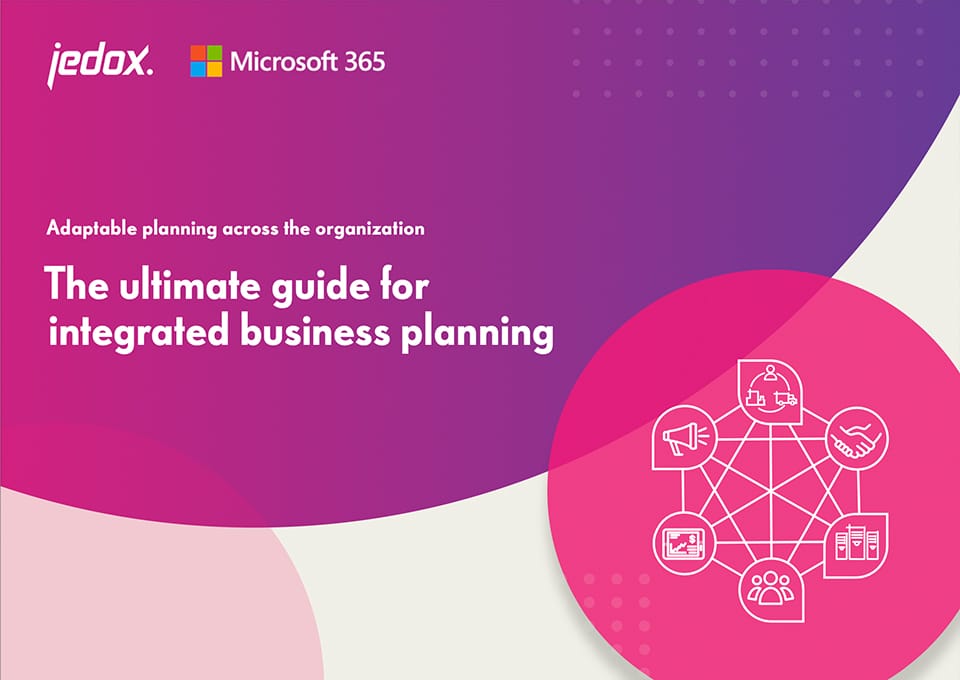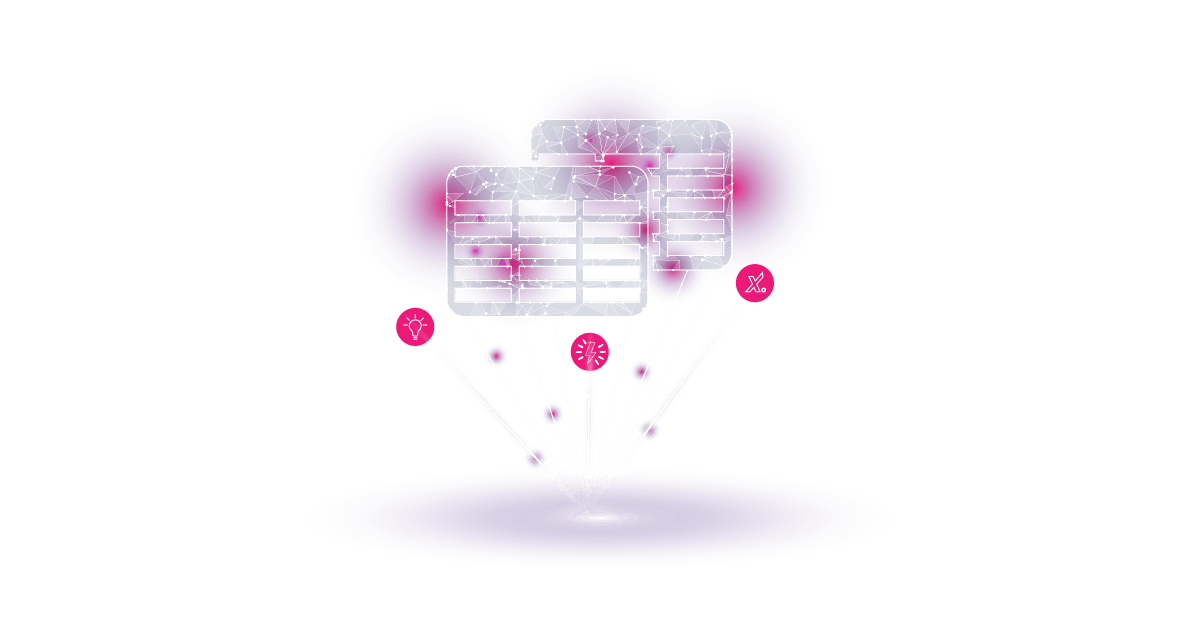
7 steps for implementing integrated business planning
Moving from traditional, siloed planning to integrated business planning (IBP) helps teams across an organization collaborate better by integrating all the data that matters into a single platform, no matter how complex the business environment. The result is a more complete picture of an organization and its performance, which empowers teams to work smarter, collaborate better, and hit the mark.
What is integrated business planning?
IBP is the thread that connects finance, sales, marketing, HR, supply chain, and environmental, social and governance (ESG), integrating cross-organizational data into a single source of truth. This eliminates silos, bridges performance management gaps, and adds richer context to the numbers. Moving from siloed departments and disparate systems to IBP eliminates inconsistent reports and forecasts, which contribute to a lack of transparency and duplicated efforts. IBP also enables seamless integration with existing systems, such as Salesforce, HubSpot, Microsoft Dynamics 365, SAP, and Oracle.
The benefits of IBP include:
- Simplified planning, reporting, and analysis across the organization
- A single source of truth integrating all the data that matters
- Quick user adoption by leveraging Excel and other familiar solutions
- Simple low-code/no-code integration requiring fewer technical resources
- Integrates any kind of data from any source
- Adaptable to changing market conditions and customer needs
What integrated business planning is not
Integrated business planning is not siloed and linear like traditional planning methods and does not solely focus on finance teams like financial planning and analysis (FP&A). In traditional planning, teams such as finance, sales, HR, supply chain, and ESG function separately with their own processes. Each team creates internal plans and KPIs, and often uses different systems and data sources to create them. Consequently, their processes are not linked. This leads to multiple versions, long planning cycles, and too much time spent putting the pieces of “the big picture” together. As a result, growth targets can only be tackled vaguely, and new opportunities remain undiscovered.
How to get started with integrated business planning
IBP can bring transformative change for people, processes, and technologies. Use these seven steps to define a strategy and create the framework for a successful implementation:
1. Create a plan with clear goals
A clearly defined strategy is critical for successful planning. Create a well-documented plan with clear financial goals and share it across the organization. Pay attention to meaningful goals that are tied to the organization’s growth plan. The strategy should outline how to achieve each goal, which product categories to focus on, which markets to target, and which customer segments need special attention. Sharing this information early on helps teams integrate the strategy into their internal plans.
IBP ensures alignment with the organization’s critical objectives, enabling all teams to be coordinated and empowered to work as efficiently as possible. This requires early planning, clear roles and responsibilities, and a coordinated schedule. IBP can be aligned with the following objectives:
- Planning growth categories
- Direction of product development and innovation
- Targeting digital channels
- Achieving liquidity targets
- Achieving margin targets
2. Define critical capabilities
Identifying the organization’s unique needs is crucial. Before scheduling demos with multiple solution providers, clarify the organization’s must-have capabilities and the nice-to-have capabilities. Features are important, but a tool with highly complex computational capabilities misses the mark if the team does not use 90% of them.
It is also essential to support team members in their daily tasks. Spreadsheets are still widely used, even though they present planning challenges. Teams may lose autonomy when moving to an IBP solution that relies on IT. For example, finance would still be responsible for the budgeting process but would no longer be able to manage it independently. The key is balancing the autonomy that spreadsheets bring with the adaptability of an IBP solution.
3. Include all departments
The purpose of IBP is to streamline planning and performance across the organization, so cross-departmental collaboration is key to successful implementation. Get decision-makers from every team at the same table early on to help identify gaps and form a shared path forward. For example, involve IT early to determine how to integrate existing systems, ensure data protection and security, and build in customization and autonomy for certain teams.
A quick start with key users supports building skill sets and capacity efficiently. Realistic goals can be set and achieved within short periods of time. A slow start poses significant challenges – when IBP implementation takes six months or longer, team members can change, and the organization loses sight of the original goals. Efficient IBP implementation should happen in several quick phases.
4. Establish shared KPIs
Transparent communication of the organization’s baseline metrics and budget targets is essential. Shared KPIs should be developed for use across departments, ensuring that the definitions of these KPIs are shared and understood by all decision-makers. This aligns every team’s actions with common goals, improves confidence in the information, and increases transparency. Speaking the same language creates a single source of truth and enables simple, straightforward planning.
5. Consider artificial intelligence
Artificial intelligence (AI) is now widespread, with the explosion of generative AI, such as ChatGPT. Organizations are increasingly adopting AI to streamline planning and identify the internal and external drivers that have the greatest impact on their business. Powerful IBP solutions embrace the power of AI and should already have it embedded in their platforms, enabling teams to leverage predictive forecasting quickly and simply. These practical solutions help teams achieve greater planning efficiency, streamline time-consuming activities, and free up time for higher-value tasks.
How is the procurement of materials, such as production and transport capacity, developing? Which product or service areas have the highest growth rates? These are just a couple of key drivers that require AI-powered planning.
6. Look for a long-term partner
IBP solutions must do more than just support the planning process. They should not only deliver on high-performing technology but also add value in terms of innovation, best practices, and long-term advantages. Solution providers should be able to address basic organization-specific questions. Instead of focusing on the demo alone, they should check whether the solution meets the organization’s unique needs and if they can set up a feasibility workshop.
Cross-organizational teams will reap the benefits of IBP well into the future if they strategize on a path forward with a partner that understands their business goals. A defined path to IBP will enable better collaboration and confident decision-making, regardless of economic uncertainty or unpredictable global events.
7. Choose an integrated business planning solution
Built to adapt to any organization, teams can start reaping the rewards of IBP software such as Jedox at any point in their digital transformation journey. Whether an organization needs new business sectors, data sources, or models, they can be added at any time.
Teams can also get started with AI easily. The embedded Jedox AIssisted™ planning wizards enable teams to integrate data from formerly disparate systems whenever they are ready. Users immediately start reaping the benefits of quickly identifying the internal and external drivers that have the greatest impact on their business.
These IBP capabilities enable a culture of decisiveness and confidence so teams can plan for opportunities, react quickly to changes, and uncover what they didn’t know was possible.
Conclusion
IBP has the power to eliminate data silos and tell the full story of the organization and its performance. All teams can reap the benefits of IBP by collaborating better, accessing real-time data, and driving actionable insights that would otherwise go untapped.





